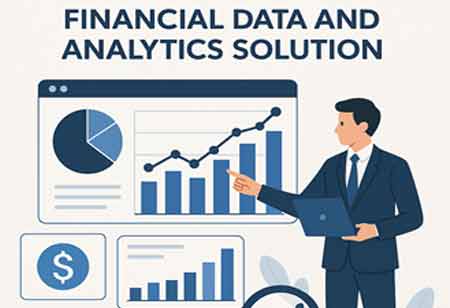CLOSE
Specials
- Trading Solutions APAC
- Wealth Management MENA
- CPA Firms Canada
- Financial Risk Management APAC
- Investment Banking APAC
- Corporate Advisory APAC
- Regtech APAC
- Escrow Services
- Digital Banking Latam
- Investment Advisory APAC
- Treasury Management Europe
- RegTech Europe
- Financial Risk Management Europe
- Mortgage Broker
- Financial Licensing Europe
- RIA Advisory Europe
- FinTech Canada
- Financial Asset Management APAC
- Financial Health Europe
- Trading
- Investment Services Europe
- Lending Mangment Latam
- Payment Solution Europe
- Broker Dealer Firms Canada
- Alternative Investments Canada
- Financial Fraud
- Investment Management Latam
- Investment Banking Canada
- Lending Management
- Payment Solution
- Proprietary Trading Europe
- Wealth Management
- FinTech
- Financial Brokerage Firm APAC
- Investment Advisory Europe
- Claim Adjusting
- Claim Adjusting APAC
- Mergers and Acquisitions Consulting APAC
- Equipment Financing
- CPA Firms
- Mergers and Acquisitions Consulting Canada
- Investment Services
- Valuation Services Canada
- Wealth Management APAC
- Broker Dealer Firms
- Debt Collection Agencies
- Mergers and Acquisitions Consulting
- FinTech Europe
- Fintech Latam
- Financial Planning / Retirement
- Investment Management
- Financial Compliance
- Payment and Card Latam
- Financial Marketing
- Investment Services Latam
- Digital Insurance Europe
- Alternative Investments
- Trading Solutions Europe
- Tax Advisory Canada
- Mergers and Acquisitions Consulting Latam
- Wealth Management Latam
- Digital Banking Europe
- Business Loan
- Financial Portfolio Management Canada
- Financial Restructuring Europe
- Mergers and Acquisitions Consulting Europe
- Wealth Management Europe
- Debt Collection Agencies Europe
- CFO Services
Weekly Brief
×Be first to read the latest tech news, Industry Leader's Insights, and CIO interviews of medium and large enterprises exclusively from Financial Services Review
Thank you for Subscribing to Financial Services Review Weekly Brief
Transforming Financial Services with Artificial Intelligence Analytics
AI is transforming financial services by enhancing efficiency, automating tasks, improving risk management, and personalizing services, while also posing challenges in integration, transparency, and cybersecurity that require careful regulation.

By
Financial Services Review | Monday, December 01, 2025
Stay ahead of the industry with exclusive feature stories on the top companies, expert insights and the latest news delivered straight to your inbox. Subscribe today.
AI-powered financial data and analytics solutions have revolutionized the financial sector, transforming the operational efficiencies the industry was accustomed to and how financial firms and businesses approach analyzing and interpreting data. The impact of artificial intelligence in finance has been so wide-ranging that innovations have impacted areas far beyond traditional data management and analytics. This has paved the way for a new dimension in decision-making and has unleashed enormous potential for more innovative investments, improved risk management, and more personalized services.
Adapt to Market Trends and Efficiency Seeking
While financial institutions are seeing an increase in available data, the demand for new, more efficient, and intelligent analytics tools is becoming ever more apparent. It has transformed manual processing into intelligence-driven solutions in the market. AI has made a significant step towards changing businesses and institutions from handling vast quantities of real-time data to efficient, predictive trend mapping, risk mitigation, and growth opportunity creation.
AI has also emerged as an essential solution for automating repetitive tasks, allowing financial analysts to focus on higher-order decision-making and client relationship building. Algorithmic trading, for example, has been quickened up and brought to an advanced level by AI, where traders can make faster and smarter decisions. At the same time, it competes with predictive analysis, which is used to forecast market trends and optimize portfolios. These advancements have led to enhanced performance and operational effectiveness, resulting in increased customer satisfaction.
Fraud detection and risk management have also emerged as prominent trends in the adoption of AI tools. Banks resort to machine learning algorithms that automatically learn patterns from data indicative of fraud and yield faster and more precise results than conventional methodologies.
Challenges to Integration or the Conquering Barriers of Technology
However, revolutionary AI-based financial data analytics did not come without challenges. The application may not be so pleasant within most organizations' existing operational structures. Many will likely encounter issues related to data quality, compatibility, and scalability. This technology promises efficiency but requires considerable capital investments in technology and talent, which not all companies can afford.
There is also the issue of transparency in AI algorithms. Decisions made by AI, for instance, regarding credit scoring and risk assessment, are opaque, so there is a concern for fairness and bias in such decisions. To address these issues, it was necessary to advance industry-wide efforts to develop transparent and ethical models of AI. Financial institutions have now learned to cooperate with regulators to ensure that an AI system is effective, transparent, and fair.
It will also bring about heightened cybersecurity woes as financial institutions become more dependent on AI. As economic data becomes increasingly digitized, AI-driven financial data is being linked ever more tightly into the systems of financial institutions, and the threat of data breaches and cyberattacks is rising. The financial sector is investing heavily in its cybersecurity infrastructure to protect sensitive data and maintain the security of digital transactions, thereby constructing defenses against such incidents. These challenges require a multi-pronged approach that involves technological advancements, strong regulatory frameworks, and building customer trust.
Sustainability and Consumer Demands: The Way Ahead
With AI-powered financial data analytics constantly evolving, sustainability and regulation have become key subjects in the industry. AI gathers data; therefore, such huge volumes can significantly affect environmental sustainability efforts. For example, AI is optimizing energy in financial procedures and the environmental impact of financial institutions. Based on evidence that financial companies are acknowledging that green considerations should enter their decision-making processes and that AI can help make more eco-friendly decisions, though, it is apparent that such an understanding has not taken root across the entire financial sector.
At the same time, regulators are taking more significant notice of the use of AI in financial services. Governments and regulatory bodies would also work to define a regime that guarantees responsible AI use and citizen protection. This also entails establishing rules on transparency, accountability, and the ethics of AI in financial services. Like the evolution of AI, the regulatory environment could also become stricter to prevent misuse and ensure that AI systems are designed in a manner that respects consumer rights and promotes fair play.
Consumer demands are also going to shape the future of AI in finance. Consumers demand fast, secure, and transparent personalized financial services. AI-driven analytics solutions enable financial institutions to develop customized investment strategies, offer personalized product recommendations, and provide proactive customer service. This highlights one of the most important factors driving the rapid growth of AI technologies in financial services: meeting the increasing demand for seamless, data-driven customer experiences.
AI will continue to lead innovation and solutions in the coming decades, and these solutions certainly have a bright future with financial data and analytics. Machine learning, natural language processing, and big data systems will yield even more accurate predictions, better risk management, and more personalized services. As such, the evolution of AI tools will likely give rise to increasingly complex capabilities that provide an additional competitive advantage to organizations that embrace them.

Copyright © 2025 Financial Services Review. All rights reserved






